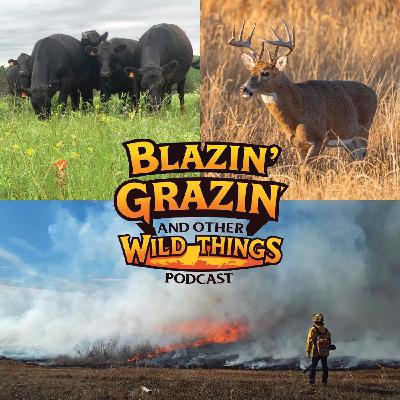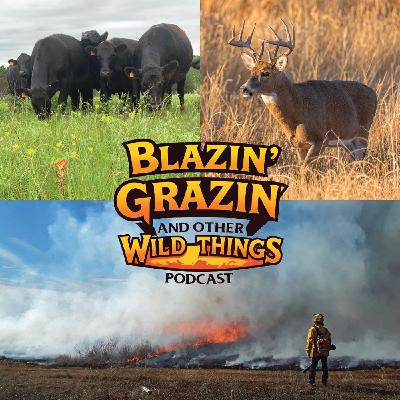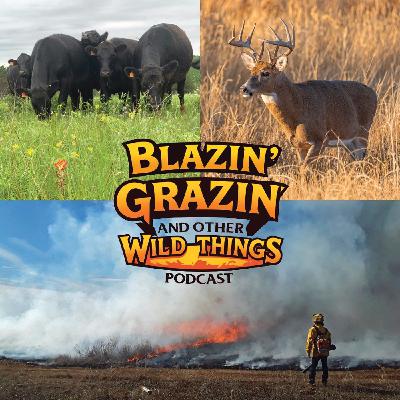Fence Rows, Hay Bales, and Hitchhiking Seeds - BGWT 118
Description
Dr. Karen Hickman sits down with John Weir, Dr. Laura Goodman, and Dr. Mark Turner to talk invasive plants across the Great Plains—what’s here, what’s coming, and why our best defense often starts with a clean pickup, a better plant choice, and a tighter contract.
We walk through Callery/Bradford pear’s “overnight” takeover, Old World bluestem’s misnamed reputation, and how sericea, Johnson grass, privet, kudzu, honeysuckle, tree-of-heaven, Siberian elm and others move from roadsides to rangeland.
You’ll hear field-tested tips: early detection/rapid response, where to scout first (gates, pens, ditches), what to tell pipeline and oilfield crews about decontamination, how hay can import problems after wildfire, and why tall, highly productive grasses (miscanthus, giant reed/cane, phragmites) pose wildfire risks on the urban–rural edge.
We wrap with Oklahoma’s watch lists, better native alternatives (hello, Mexican plum), and a clear message—don’t plant your problems.
Top 10 takeaways
- Callery/Bradford pear spreads fast once cross-pollinating varieties arrive—two fallow years can become a thicket.
- Old World bluestem rides roads and rights-of-way; “bluestem” naming drives confusion with natives.
- Johnson grass, sericea, privet, honeysuckle, kudzu, tree-of-heaven, Siberian elm remain priority species to control.
- Focus early detection at high-traffic nodes: gates, pens, ditches, well pads, pipeline corridors.
- Require equipment decontamination (power-wash, mud removal) in contracts with oil & gas, utility, and construction crews.
- Be cautious with hay imports, especially after wildfire—weed seeds (and insects) ride along.
- Avoid planting tall, high-biomass ornamentals (miscanthus, giant reed/cane, phragmites) near homes—wildfire risk.
- Prefer native alternatives (e.g., Mexican plum instead of Callery pear); many ornamentals marketed as “sterile” aren’t.
- Oklahoma needs clear, funded noxious-weed classes (A–C); enforcement without budget won’t work.
- Knowledge + Extension wins: use watch lists, posters, and community education to “not plant your problems.”
Top 10 takeaways
00:00:01 –00:01:25 | Intro & mission: fire meets forage; hosts & guest intro; subscribe + website.
00:02:02 –00:04:22 | Hickman’s roots in Woods County; farming/ranching background; OSU roles.
00:04:49 –00:09:08 | How invasives grabbed her attention (CRP “spar grass,” Old World bluestem); 1990s roadside changes.
00:08:54 –00:10:11 | “Native encroacher” vs “invasive”; sericea & Johnson grass rising.
00:10:41 –00:13:03 | Noxious weed laws 101; state differences (TX aquatic list, classes A–C in AZ/CO/NM/MO).
00:13:40 –00:15:23 | Callery/Bradford pear goes from sterile to seedy; why it exploded.
00:16:44 –00:17:19 | Jujube (Ziziphus) thickets; why mechanical control fails.
00:20:09 –00:21:11 | “Bluestem” name confusion; WW/Spar lines; spread via rights-of-way.
00:31:03 –00:31:11 | How WW/Spar got their names; OSU/Woodward history.
00:31:14 –00:34:09 | OK Invasive Plant Council: Dirty Dozen poster, 140-species Watch List, filters by region/land use.
00:35:13 –00:36:12 | “Top threats” statewide: Callery pear; fast conversion of fallow fields.
00:36:41 –00:39:05 | Privet & Japanese honeysuckle; freeze + fire management anecdotes; native alternatives.
00:39:51 –00:40:33 | Kudzu: buyer beware on “pretty vines.”
00:41:09 –00:44:21 | Oklahoma policy: recent veto; why bills need experts, budgets, and classes (A–C).
00:44:41 –00:47:21 | Looming issues: miscanthus, giant reed/cane, phragmites; wildfire implications.
00:49:05 –00:50:27 | Where to scout first: pasture roads, gates, pens, ditches; how vehicles and oilfield traffic spread seed.
00:51:03 –00:52:22 | Hay after wildfire: well-meant donations, unintended weeds & insects. Tagline needed!
00:52:49 –00:53:09 | Final advice: avoid listed non-natives; natives bring more benefits. Close.
Find all resources at BlazinGrazinWildThings.com







